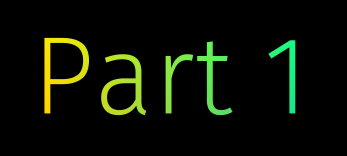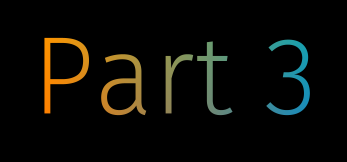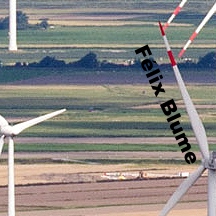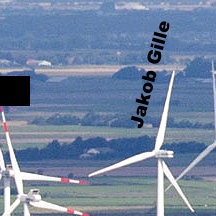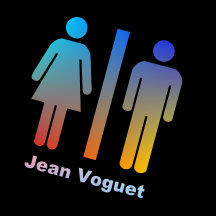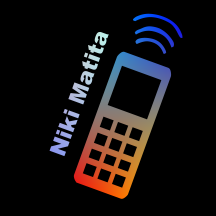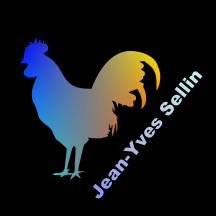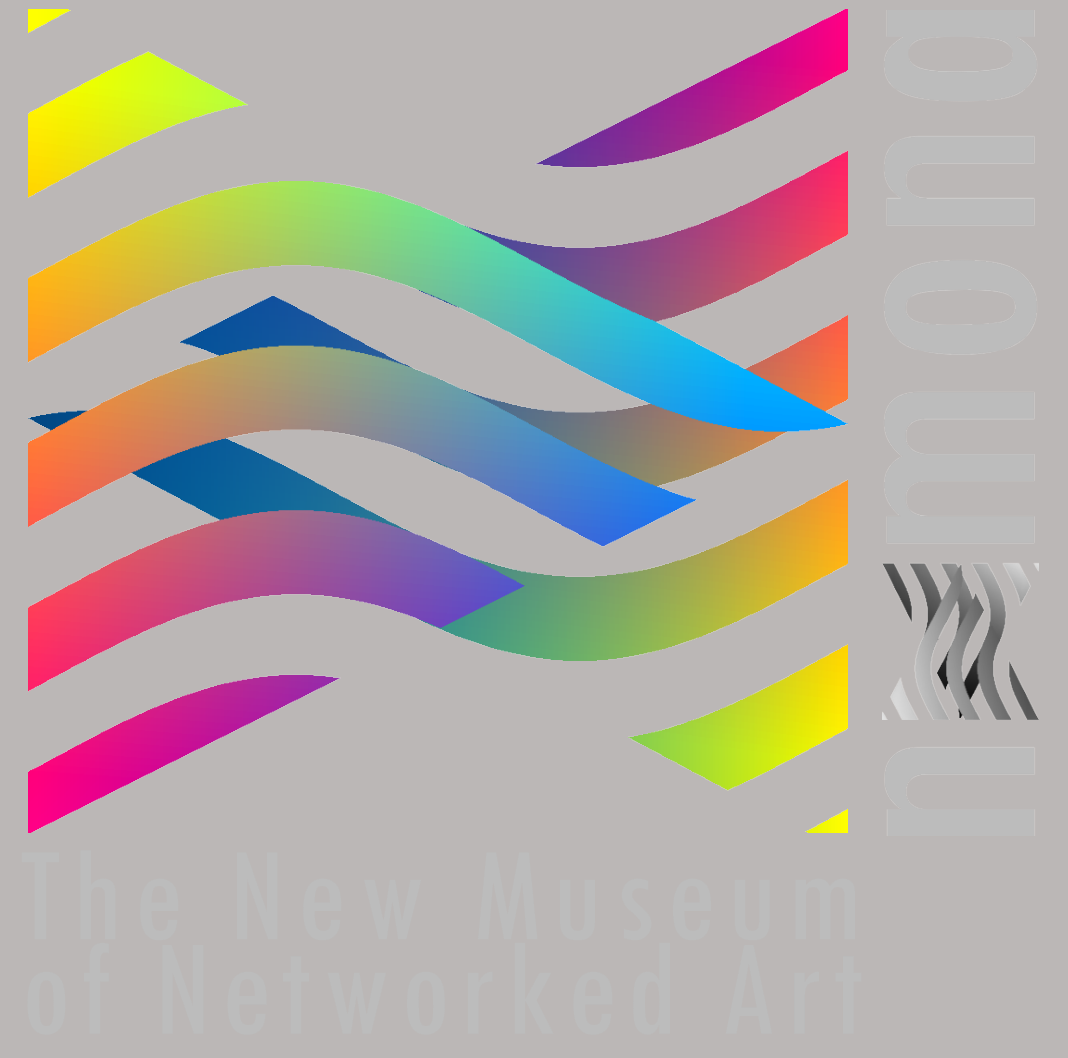
18 December 2024 – 31 March 2025
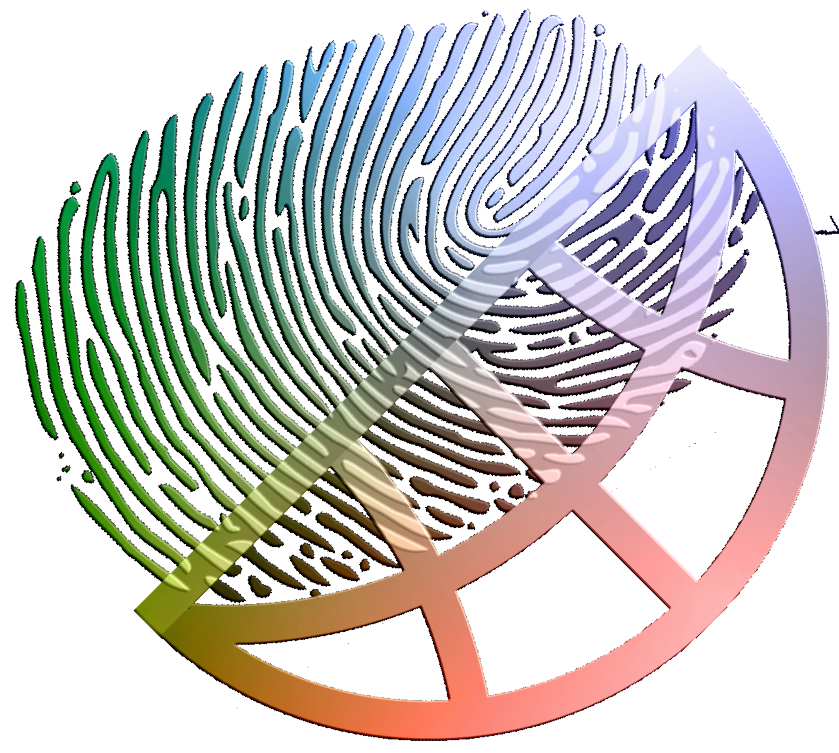

While Anthropocene (actually only proposed as a new epoch of geologic time, following the Holocene) is an officially not yet definitely defined period of time during which human activities are thought to have had a significant impact on the global environment, regarded as having begun sometime between twelve thousand years ago, with the spread of agriculture, and two hundred years ago, with the advent of industrialization, as a topic of the media art context of The Anthropocene Project, the term is going far beyond marking the contradictory relationship between (the volatile transitory character of) human nature and (sustainable) nature, the significant human impact on ecosystems, including the human-caused climate change, biodiversity loss etc.
Curated by Wilfried Agricola de Cologne, The New Museum of Networked Art realizing the Sound of Anthropocene Project as a new media art context in an exchange between virtual and physical space, is inviting artists using sonic art as a non-visual medium dealing with the (positive and negative) human impact.
 Sound of Anthropocene - the artists - part 5Barry Anderson (USA)
Sound of Anthropocene - the artists - part 5Barry Anderson (USA)Anton Anishchanka (BY)
Giovanni Michelle Arroyo Torres (MX)
Paul Beaudoin (Estonia)
Silliam Bims (USA)
Daria & Dominika Blazek (PL)
Félix Blume (France)
Sara Broto (Spain)
Cave Aquam Collective (Italy)
Chin Ting Chan (CN/USA)
Simon Coates (UK)
Gordon Delap (Ireland)
Amine Dhouibi (Tunisia)
Finbarr Dillon (Ireland)
ERIZONTE (Spain)
Cristian Fierbinteanu (Belgium)
Brian Ledwidge Flynn (Ireland)
Giorgio Gerardi (Italy)
Jakob Gille (Germany)
Marek Hlaváč (CZ)
Josephine Illingworth-Law (UK)
Yeudiel Infante (MX)
Richard Jermain (USA)
Yauheni Kalmykou (Poland)
Roman Klaudo (Serbia)
……the natural powers as tools for survival
 Sound of Anthropocene - the artists - part 6Chia-Liang Lai a.k.a ( ether o )(TW)
Sound of Anthropocene - the artists - part 6Chia-Liang Lai a.k.a ( ether o )(TW)Zoe (Yi-Cheng) Lin (TW)
Niki Matita (Germany)
Ian McArthur (Australia)
Robert McClure (USA)
Ariel Mioduser (IL)
J.F. Nation (USA)
Chaeryeong Oh (S.Korea)
Motoki Ohkubo (Japan)
Shawn Pinchbeck (Canada)
PROMECO (Paul Collins & Mathilde Proy) (France)
Giuseppe E. Rapisarda (Italy)
Stephen Roddy (Ireland)
Mar Garrido Román & Laura Apolonio (Spain)
Timothy Roy (USA)
Petr Safronov (NL)
Chiradip Sarkar (India)
Jean-Yves Sellin (France)
Matías Ignacio Serrano (Chile)
Akgün Tokatlı (Turkey)
Marina Trevino (USA)
Eduardo Brigagão Verderame (Brazil)
Jean Voguet (France)
Willyn Whiting (CA)
……unfinished – humanity- threatened with extinct
11 August – 08 September 2ß24
The Details
Barry Anderson (USA) – The Germ, 2021, 3:56
This track is a generative composition recorded live from a modular synthesizer.
Barry Anderson is an artist based in Kansas City working in video, photography, sound, and
installation. His work has been featured in over 50 solo exhibitions and over 100 group exhibitions
around the US and abroad. His work is also included in museums and numerous public and private
collections around the country. His current projects are Polychrome Rift, a series of AI-processed
videos and prints exploring psychological space in abstract form and content, and Lucite Plains, a
music and performance collaboration with fellow visual artist Ricky Allman.
Anton Anishchanka (BY) – Dawn Chorus, 2024, 21:16
The author of Dawn Chorus is not a person – he is just a medium who records and transmits a unique combination of sounds. The real authors of this work are the birds greeting the new day with their vibrant voices. Their twittering breaks into the predawn silence of the moor. They are asserting themselves, discussing something, arguing, calling to each other. A person may only try to interpret their chorus, uncover their loud presence in the forests and bogs of Vyganashchanskae reserve, Belarus. This territory has coincidentally escaped deforestation, melioration and pollution, so birds can be fully fledged actors there.
Anton Anishchanka
is field recordist, sound artist and curator from Minsk, Belarus. He works in the field of electronic music production and electroacoustic music composition. He prefers to use analogue musical gear and soundscapes made during sound expeditions around the world. He works in different musical genres – ambient experimental, ethno-ambient, ambient jazz, drone. Most of his projects are about deep listening experience. Currently he is working on the Parus ethno-ambient project in collaboration with folk singer/ ethnographer Hanna Silivonchyk. Its tracks are based on ambisonic soundscapes, live vocals, sampled ancient Belarusian acoustic instruments, tapes, synthesizers and analogue sound precessing gear.
Giovanni Michelle Arroyo Torres (MX) – Eco Anthropo: Humans and new sound environments, 2023, 7:38
The Anthropocene goes beyond a simple proposal of a geological era where it has been demonstrated that human beings have the power to alter both social and natural systems.
Eco Anthropo: Humans and new sound environments creates an exploratory analysis of the Anthropocene through a sound narrative that makes a journey between the sounds of the past, present and future, based on the hypothesis of the power that humans have to modify the soundscape around them, to such an extent that manages to obtain the ability to generate new sound environments.
Giovanni Michelle Arroyo Torres,
born March 25, 1999 in Toluca, State of Mexico. Graduated from the Universidad Autónoma Metropolitana Unidad Lerma with a degree in Digital Art and Communication. His work has been linked to the post-production of audiovisual projects, focusing mainly on sound. As a digital artist, he seeks to create an impact through abstraction, editing and experimentation of sounds, images and shapes, in order to create spaces and feelings in which the viewer empathizes with the themes of his works.
Paul Beaudoin (Estonia) – Sound Thought 3, 2024, 7:38
This music evokes the wonder of witnessing the Earth rise, blending the recorded images from our instruments with the boundless reach of our imagination. It reminds us of the delicate balance that sustains life and the extraordinary splendour that makes our planet unique.
Paul Beaudoin
is a globally recognized interdisciplinary artist, seamlessly integrating sound, paint, text, and video in his creative pursuits. He holds a PhD from Brandeis University, and was the 2023-24 artist-in-residence at the esteemed Alice Boner Institute in Varanasi, india. He is a member of the wandelweiser collective and resides in Tallinn, Estonia.
Silliam Bims (USA) – Watertown Manhunt, 2013, 6:03
This recording is the result of a sound sculpture created for the Leonard Bernstein Festival of the Arts in 2013. It was comprised of over 50 AM/FM radio receivers and designed to make all available FM broadcasts available on a single audio channel.
During production of the sculpture, the events of the Boston Marathon Bombing ensued, including the police manhunt for the bombing suspect. Residents of Watertown and the surrounding area were asked to remain indoors on lock-down in their residence. This recording was created on 4/19/2013 while in the adjacent town of Allston, MA. It consists of live, simultaneously broadcast frequencies. Radio signals are introduced by manually raising the volume on each connected receiver. The recording has undergone no editing.
Silliam Bims
is a legal name, acceptable for a variety of official uses, from employment, to banking and debt collection. The name is suitable for emails, subscriptions, promotional offers, and all other organizational enterprises needing a semantic target for the biological referent.
Daria & Dominika Blazek (PL)- perfectshum1_013, 2023, 24:29
Daria & Dominika Blazek
L A R T a team of two sisters multidisciplinary artist, who have been working together on several projects since 2010, mainly ART. INSTALLATION _organic _LAND ART _ ephemeral_ FORM, SOUND FIELD , DESIGN, portable architecture, for URBAN spaces and LAND ART.
Félix Blume (France) – Horses Talk, 2018, 7:19
In the small village of Benești, a few hours’ drive west of Bucharest, locals use horse-drawn carts to go to the fields. They return with freshly cut hay or sand from the riverbed. Coachmen talk to their horses to indicate which directions to follow and the appropriate speed. “Dii” to move forward, “Hai” to go faster, “O” to stop. I’ve invited myself with the microphones on board for a ride. Communication runs through sounds and gestures, which in my lack of understanding Romanian language turn horse talk into universal language. Each in their own manner, man and animal, seem to understand each other. Voice speaks beyond words, inviting us to listen to timbre, rhythms and melodies that intertwine as they are spoken.
Félix Blume (France, 1984)
is a sound artist and sound engineer. He currently works and lives between Mexico Brazil and France. He uses sound as a basic material in sound pieces videos actions and installations. His work is focused on listening it invites us to a different perception of our surroundings. His process is often collaborative working with communities using public space as the context within which he explores and presents his works. He is interested in myths and their contemporary interpretation in human dialogues both with inhabited natural and urban contexts in what voices can tell beyond words.
Sara Broto (Spain) – Echoes from Earth, 2021, 09:23
Sound and chronological journey from Protohistory to the present day of the
Spanish Mediterranean territory, with special emphasis on instruments from
the land itself (ceramic and metal) based on research in 2021 on uncatalogued
fragments from the Museum of Fine Arts of Castellón ( Spain). Music stands out
as the common thread of our history, instead of war, always present in
museum spaces. We have been dancers, singers, musicians, since the origin of
our times.
Sara Broto,
music, literature and visual art are her skins in movement through the roots of
craftswomanship and mediation and their natural interrelationships of
transverse layers. In her work as both a creator and an art curator, landscape-
voice-ritual converge in a symbiotic way, tracing cohabitation and spaces of
poetics and sustainable fabrics between foreign and native natures.
In her creations she immerses herself between the waters of bioart and the
alchemy of experimentation: sound (bioacoustics, soundscape, radio art, sound
art, archaeomusicology), audiovisual and organic (study of nature through art),
having carried out several artistic residencies.
Cave Aquam Collective (Italy) – Cave aquam I, 2024, 22:17
The sound track is an attempt to summarize the sonic geographies of the Travertine quarries, both abandoned and …
This track is part of an investigation into the Roman travertine extractivism system. It’s a sound mapping of immersive itineraries in the Tivoli-Guidonia quarries, using field recordings practices. It’s a journey into the soundscapes of active travertine extraction sites and the rich ecosystems that have developed in the abandoned quarries devoid of human presence. It’s a crossing of spaces within the folds of both. An evocation of memories and imaginings of multiple temporalities, intersecting ruins of the past and the future, and visions of another dwelling removed from the domain of extractivism.
Cecilia Blanco representing Cave Aquam Collective (Laura Landi, Cecilia Blanco, Anastasia Solazzo, Arianna Cianetti, Cristina Martone, Davide De Lillis, Lucia Tedesco, Paola Pietronave). Work realized also in collaboration with Ezequiel Abregu (mix e mastering)
Cecilia Blanco is an Argentinian artist. Co-creator of scenic works, video installations, performances, and actions, her practices address socio-environmental issues, the relationship between political practices and artistic creation, and the production of fictions that can challenge binary and dominant logics of perception. Cave Aquam is a collaborative, interdisciplinary project created at the conclusion of the 2023 Master’s in Environmental Humanities (RomaTre University). The collective involves artists and researchers from various parts of Italy. Starting with the theme of extractivism, it explores how this impacts the environment and the diverse forms of life that inhabit these areas.
Chin Ting Chan (CN/USA) – Mirror Sculpture,2023, 9:00
The piece is inspired by over twenty years of observation on a Ficus tree. While its surrounding has changed dramatically, the tree remains vigorous and intact. This shows the impact of time on things at different pace. Our perception or memory of them can vary dynamically, transforming them into a mirror that reflects who we are at different times and stages of our lives. When we are able to adapt to our surrounding with an open mind and curiosity, we not only see a clearer image of ourselves from this mirror, but also through it.
Composer Chin Ting CHAN
grew up in Hong Kong and came to the United States in 2003. He has been featured in festivals including Ars Electronica, IRCAM’s ManiFeste, ISCM World Music Days, and UNESCO International Rostrum of Composers, among others. He is currently an Associate Professor of Music Composition at Ball State University.
Simon Coates (UK) – Fire Into the Sun, 2024, 1:48
Fire Into the Sun reflects on the noise and clamour that interrupts perceptions of global change.
Simon Coates
is an artist and writer based in London, UK. His practice is predicated on examining societal mores and behaviors as communicating modes.
Gordon Delap (Ireland) – I dreamt that I died and came back as a moth trapped in a practice room piano, 2017, 9:25
This was built using rejected source sounds and abandoned ideas for a composition for live piano and electroacoustic sounds. The title alludes to the famous butterfly passage from Zhuangzi’s writings, which (in one translation) goes like this:
One night, Zhuangzi dreamed of being a butterfly — a happy butterfly, showing off and doing things as he pleased, unaware of being Zhuangzi. Suddenly he awoke, drowsily, Zhuangzi again. And he could not tell whether it was Zhuangzi who had dreamt the butterfly or the butterfly dreaming Zhuangzi. But there must be some difference between them!
Gordon Delap
comes from Co. Donegal in Ireland. He studied composition at City University, London, and Queen’s University, Belfast. He has undertaken residencies at Nadine Arts Centre in Brussels, the Crescent Arts Centre in Belfast, the Technische Universitaet in Berlin, at Edinburgh University, and SCRIME, Bordeaux. He is currently lecturer in music technology at the National University of Ireland, Maynooth.
Amine Dhouibi (Tunisia) – Zuravan, 2024, 5:00
“Recorded live at Gerichtstraße 31, Kalbe (Milde), ‘Zuravan’ is a musical
exploration of the philosophical concept of time and eternity. Through intricate musical
compositions, the piece seeks to express profound philosophical ideas, inviting listeners on a
contemplative journey through sound.
Born and raised in Sousse, Tunisia,
Amine Dhouibi is an independent guitarist and composer.
He studied at the Higher Institute of Music in Sousse and has participated in various international artist residencies and events.
His work focuses on the evolution of modern music, blending influences from diverse artists and musical experiences.
Amine strives to carve his own unique musical style, reaching out to younger generations and advocating for the growth of the local art scene.
His debut album, “The Resurrection,” was nominated for Best Newcomer in Jazz at the Mzansi Jazz Awards 2021, and his second album, “Eternity,” was nominated for Best Contemporary Jazz Album in 2023.
Finbarr Dillon (Ireland) – Sonority Doodling, 2019. 9:57
In early 2019 I got my copy of NI’s ‘Komplete 12’ along with a copy of the IRCAM ‘TS’ time stretch transformation software applications. The piece Sonority Doodling is simply the first usable audio result from working with these new synthesis and transforming software tools.
Finbarr Dillon
is a Sound Designer and Composer living in Lisdoonvarna Co Clare, Ireland, working in the areas of Electroacoustic, Acousmatic and Electronicia to create “Fixed Media” pieces of Sound Art. In late 1990 I had the opportunity to take a vocational ‘Sound Design, Audio Engineering’ course at Media Productions Services in London, UK.
I returned to Trinity College Dublin to do a Postgraduate Diploma in ‘Music and Media Technologies’. After TCD, I went to the University of Limerick to successfully complete a Masters in Music Technology.
My compositional practice involves working with Csound, Supercollider, MAX, software synthesisers from Native Instruments, Arturia, hardware synthesisers, Samplers.
ERIZONTE (Spain) – Countdown Rhythm 4 3 2 1, 2024, 2:38
This piece is compose with a new rhythm that has not existed until now. It is an amalgamation of four measures, one with four parts, one with three parts, one with two and one with one part.
It symbolizes the countdown of the Anthropocene against Nature. There is no more time.
Erizonte
is a multi stylistic band founded in 2002 by composer, producer and multi-instrumentalist Julian Sanz Escalona linked to the scene of avant-garde music in Spain since 1982. (More information at Wikipedia) https://es.wikipedia.org/wiki/Erizonte
Cristian Fierbinteanu (Belgium) – She Smells April and May, 2024, 14:20
This audio work has no synopsis. It needs no presentation. The link with the theme “The Sound of Anthropocene” is, hopefully, audible.
Cristian Fierbinteanu is an independent artist, member of art-pop group Fierbinteanu, active in music, sound & video art. As part of Fierbinteanu, he has performed on European scenes, including Berlin Konzerthaus, and released records via independent labels. The works of Fierbinteanu have been presented and awarded in international festivals: RVK Fringe Fest (Reykjavik – Iceland 2021), Seasoning Spring (United Cowboys/Eindhoven 2021), Phonurgia Nova (Paris 2020), Grand Prix Nova (Bucharest 2020), Nuit de la fiction sonore à Arles (France 2019), Arts and Science days (St. Etienne/France 2019), 60 Seconds Radio (Canada 2019), Dvorak Marathon (Berlin Konzerthaus), Dvorak remix (The Czech Cultural Center/ Bucharest). “Un auteur à suivre” – Phonurgia Nova; “An artistic duo that sincerely deserves total fascination” – Art7; “One of the most eccentric creatures of the independent music made in Romania” – DILEMA veche; “The oddest and most experimental duo of the Romanian electronic music” – VICE Romania.
Brian Ledwidge Flynn (Ireland) – In Dust, Realization, 2022, 10:31

Giorgio Gerardi (Italy) – music from the video ‘Driving’, 2024, 5:51
It is the soundtrack of a short experimental film ‘Driving’, produced with Ableton.
Giorgio Gerardi
Around the age of twenty, I began my personal photographic research. I got fascinated by the artistic
Avant-garde of the Nineteenth and Twentieth centuries, because they focused on the analysis of the visual
medium, than to the staging of reality and its representation.
In recent years, I have focused on some details of the environment around me: clouds, leaves and everyday
objects that you daily have under your eyes. I have also produced music, some videos, which have been
screened at video mapping festivals and participated in film festivals. I’m also interested in the use of AI.
Jakob Gille (Germany) – Perspectives of Venice, 2024,. 14:00
In the creation of “Perspektiven von Venedig”, four recordings captured across various
locations in Venice serves as the foundation. Employing an Ambisonics microphone
(Zoom H3 VR) and recording at a high sample rate (96 kHz), the endeavor was to
encapsulate a broad spectrum of frequencies, facilitating an immersive audio
exploration. The compositional process is deeply rooted in the study of Acoustic
Ecology, aiming to translate the diverse auditory perspectives of non-human entities into
a humanly accessible form. The piece explores temporal resolution and how different
species perceive time and sound, integrating these unique perceptions into the
composition.
Jakob Gille
studied at the HfM Dresden composition and music theory. He is the driving
force behind Into Sound, an initiative that has organised multiple concerts for 3D
loudspeaker setups in Berlin. His compositions have been played several times at the
Medium Sonorum concert at the Ars Electronica Linz, in Ústí nad Labem in combination
with the Ambisonics Summer School 2023, at the Festival Izis in Koper and the Apnées
Festival in Grenoble. In 2023, he won an honorable mention at ISAC in Pesaro. Currently,
he is pursuing a master’s degree in Computermusic and Soundart at KUG & IEM Graz.
Marek Hlaváč (CZ) – Ovar Train Station, 2023, 4:13
Field recording. Chirping of crickets and hum of overhead powerlines at Ovar train station, Portugal. A soundscape in which non-human and human made sound intersect in a similar frequency spectrum.
Marek Hlaváč
is sound artist whose work is focused on relation of sound, technology and natural and social environments. His performances, installations, compositions and site-specific projects are based on listening, reflection and speculative reimagining. His live performances often concentrate on relationship between instrument/technological setup and interaction of participants. Occasionally he also does curatorial work (eg. Prague small guerilla style sound-art festival Transient Zones).
Josephine Illingworth-Law (UK) – Singing The Mountain – Dawn, Aurora, 2024, 7:40
These three works explore the mountain hut as a facilitator of community and interconnection with nature. Spending a winter hiking the Dolomites, I slept alone in these huts and recorded the sounds I found there; a chorus of wind, rain, cowbells, birds, dogs, fire. The resulting soundscape work depicts a 24 hour period in the hut, using lyrics created from messages left by previous occupants. In our increasingly digitised Anthropocene, it is crucial to return to places like the mountain hut where we can starkly experience our connection with each other and nature
Josephine Illingworth-Law (Uk)
Using collected sound, ethnographic research, and performance, Josephine Illingworth-Law investigates places where the human and natural worlds are entwined with unusual complexity. Trained as a chorister, she uses her own voice to meld her field recordings into lyrical soundscapes, constructing complex sound pieces designed as moments of deep listening.
Yeudiel Infante (MX) – Weeping willow – Salix babylonica, 2023, 13:26
Composition based on field recordings made in the chinampas of Lake Xochimilco, Mexico, and midi impulses obtained through the Magenta tool (Google AI). The piece aims to evoke the subtle rhythm with which flowers and plants still grow in the last sites of resistance within this important body of water, threatened for decades by the growth of the urban sprawl in Mexico City and climate change.
Yeudiel Infante (Mexico City, 1989) is a Mexican composer and sound artist. Educated in jazz composition, his music encompasses a wide variety of styles ranging from songwriting to contemporary chamber music. He has collaborated with artists such as the Chicano performance collective La Pocha Nostra, poets Rojo Córdova and Elsa Cross, and singer Eugenia León. As a sound documentarian, he won third place in the XIV International Radio Biennial (2023, podcast category). His sound work “Río Pastita” represented Mexico at the SONODOC 2023 exhibition, held in Spain.
Richard Jermain (USA) – Human Forces, 2024, 13:04
This track is composed of field recordings from various trips across the US. Conceived as a deep-listening drone track, weather system sirens, utility trucks, and subway rails are processed at various playback speeds to create dense but lilting layers of overtones. The idea behind this sound collage is to map places in which sounds are almost completely produced by industry but that nevertheless have compelling harmonies and inspire ideas of the resonances found in natural environments, winds, and storms. The track is played live and concludes with a suite of sounds create using electromagnetically resonated strings and prepared guitar.
Richard Jermain (aka The City Underground)
is a composer and PhD candidate living in Bloomington, Indiana.
His sound work takes a cybernetic approach, finding dense, evolving textures within feedback networks that utilize human-machine interaction, space, and acoustic resonance. Through deliberately hybrid arrangements, he incorporates field recordings, modular synthesis, and electromagnetically extended instruments.
Jermain’s dissertation research explores ways in which late capitalist soundscapes are depicted in electronic music genres, and the ways in which they embody ideologies of fatalism and pessimism, as well as structures of feeling around emerging ideas of progress.
Pierre Jolivet (France) – Radiant Planarity, 2023, 8:22
Surface and harmonic experimentation with a tyre simulator
Pierre Jolivet
better known by his smoniker Pacific 231, is a French musician and composer who has made significant contributions to the experimental music scene over the course of his career. Born in 1964 in Paris, France, he grew up with a deep fascination for sound and music. He began experimenting with tape recorders at a young age, and was soon creating his own unique sonic landscapes.
Yauheni Kalmykou (Belarus) – beta 19.2 bit water, 2023, 5:38
The severity of the β rhythm increases with the appearance of a new unexpected stimulus,
in a situation of attention, with mental stress, emotional arousal.
They belong to fast waves.
Their amplitude is 4-5 times less than the amplitude of α waves.
The state in the active Beta rhythm allows humanity
develop the technical aspects of life,
solve external problems,
make difficult decisions.
Beta rhythms of brain activity increase under stress,
emotional and mental arousal.
Suitable for calm, intellectual activity.
Yauheni Kalmykou,
composer and director who fled Belarus in 2020. I create binaural music using binaural beats to achieve a therapeutic effect. The effect can be fully felt if you listen to the composition in stereo.
Roman Klaudo (Serbia) – Technoether, 2021, 8:36
“TECHNOETHER” is a 4-channel sound installation for 8-channel spatial
audiosystem, the source samples for which were obtained using special
diy-equipment, which helped to convert the electromagnetic and light signals from
electrical equipment into sound. It was made for the exhibition`s “Voices of
technobiocenoses”:
“The Anthropocene epoch is characterized by dramatic changes in ecosystems
under the influence of human economic activity and accompanying random
processes. Before the twentieth century, the dominant tools of the Anthropocene
were biological monocultures – domesticated animals and cultivated plants that, with
human participation, could destroy in a few decades the natural interconnections
formed by entire geological epochs. At present, these monocultures are in turn being
replaced by new human companions – technological devices, forming a new type of
ecosystems – technobiocenoses. The inhabitants of these ecosystems live, develop,
and die according to laws similar to those of nature, but formed by sociocultural
preconditions. Art, science, technology, and the market in the world of
technobiological life become blind geological and evolutionary forces shaping the
face of our planet. The spaces of technobiocenoses are filled with inaudible voices of
technological organisms – hidden events of sound temporality that are used to
communicate between them or simply signal their vital activities.”
The sources of initial signals were chosen as means of communication, which during
the lockdown period became even more important for people – a computer, an
Internet router, a smartphone, a radio station.
Roman Klaudo
is a musician, sound artist, new media artist and
engineer. I love all things related to music and sound, so I like to create not only music,
but also musical instruments – guitars, modular synthesisers, experimental devices…
Roman was born in St. Petersburg, Russia into a dynasty of engineers involved in the
development of spacecraft. Dad worked on the electronics of the Soviet space shuttle
Buran, and grandfather was the head of the gas-dynamic testing laboratory of rocket
engines.
Creating all sorts of complicated things has always been a special passion, and the
space sphere was perfect for it. At university, Roman became interested in jazz and jazz
music, and after graduating and working in the comic industry, he continued his musical
education and started experimenting with musical instruments.
While studying at the Department of Art&Science at ITMO University, in addition to a
whole new intellectual world, he met a huge number of talented people who encouraged
him to expand his interests, and Roman became interested in neural interfaces and
deep neural networks. He continues to do so to this day in the context of musical
experiments.
Chia-Liang Lai a.k.a ( ether o )(TW) – Prelude: beat induction, 2022, 5:11
This piece is a sonic speculative fiction exploring a scenario where Earth’s rotation accelerates due to geological upheavals triggered by climate change. Inspired by research into non-Western cosmologies and healing practices involving sound and energy work, the narrative introduces the fictional “Rhythm Warriors.” These characters harness ancestral shamanic knowledge to survive the accelerated rotation of the planet.
( ether o ) is an interdisciplinary artist, drummer, producer, DJ, energy and sound practitioner from Taiwan, currently based in Berlin, Germany. Their diverse artistic portfolio encompasses music, video, sound, sculpture, installation, and performance. Employing a conceptual approach to music and sound, they view these elements as materials for storytelling. Drawing on their background as a drummer, they frequently use drums as storytelling devices, incorporating a variety of gestures into their work. Their performance practice has evolved into an ongoing exploration of the intersection between body, movement, and sound, emphasizing themes of representation, care, and healing within decolonial-eco-feminist narratives.
Zoe (Yi-Cheng) Lin (TW) – 3D Illusory Immersive Soundscape: Glacier, 2023, 10:00
Since the early 20th century, glaciers have steadily diminished. Annually, glaciers discharge 46 cubic kilometers of ice, producing seismic roars and tsunami-like waves. This composition employs 3D immersive soundscapes to create synesthetic experiences, depicting glacier textures, heights, and disintegration. It symbolizes human violence and environmental destruction, paralleling 21st-century warfare with apocalyptic themes. Primarily electronic, it includes choir-like elements to explore themes of apocalypse, redemption, and forgiveness. Blurring the lines between painting and composing, I sculpted sounds guided by my inner artistic vision. Close your eyes to sense the glacier’s essence and the waves consuming it.
Zoe (Yi-Cheng) Lin
is an accomplished composer specializing in AI music development, 3D immersive music, and auditory-visual synesthesia.
As an assistant professor at National Taiwan Normal University, her work has received international acclaim, featured at prestigious events like IRCAM Forum 2024 (Paris), NYCEMF 2024 (USA), ICMC 2024 (South Korea), MediSouP 2024 (Cyprus), SiMN 2023, MUSLAB Planeta Complejo exhibition, NYCEMF 2023, SICMF 2023, NIME 2023, MiRNArte 2023, NoiseFloor 2023, Earth Day Art Model 2023, ICMC 2022, IRCAM Forum 2022, etc. Zoe’s musical influence extends across 19 countries, spanning Asia, Europe, North and South America, cementing her global reputation in the field.
Niki Matita (Germany) – Kundschafter, 2020-24, 6:20
The right to privacy and data protection are current buzzwords, yet in everyday behavior, few consciously resist and defend themselves against ubiquitous surveillance of small spies voluntarily carried by the majority.
The ongoing series of compositions, KUNDSCHAFTER, sonifies what is invisibly transmitted and broadcast by different, partly obsolete devices, when they are supposedly silent and inactive, assumed to transmit data only they are turned on.
The scale of surveillance and self-harm has been steadily unfolding since the digitization of everyday life, while at the same an ignorance of these encroachments on personal freedom and privacy grows.
Niki Matita
is a radio_sound artist, curator, writer, presenter, record-entertainer & visual artist. In the 2000s, she was the artistic director of the club ‘Zentrale Randlage’, a platform for experimental music and culture in Berlin. As member of female:pressure she initiated the FACTS survey on gender relations at festivals. Since 2007 she is locally and internationally involved in free radio and community media. Her radioart pieces are broadcast worldwide, e.g. Česky Rozhlas, Radiophrenia Glasgow, Soundart Radio, Sistersakousmaticas, Walking Sound. ‘La Passante Ecoutante’ is her current show. In 2024 she is co-curator of NNOI Festival for 12,756 tone music in Zernikow.
Ian McArthur (Australia) – Unseen, 2024, 10:38
UNSEEN contemplates our relationship with non-human life and the more-than-human world. Juxtaposing field recordings, lo-fi electronics, and guitar driven noise, the work plays with dissonance and the disconnections between everyday life on a planet in crisis and the teeming, ever emergent ontologies around us. Foregrounding the immediacy and proximity of the sometimes nighmarish yet beautiful ecology in which we are deeply entangled, layers of multi-species in-between spaces and forms prompt a reimagining and reconnection with land desperately required in a world that despite the consequences still sees the human as omnipotent architect and manipulator of reality.
Ian McArthur
is a hybrid practitioner working in the domains of experimental interdisciplinary practice, transcultural collaboration, sound art, experimental radio, Metadesign, and education change. Working since the early 1980’s utilising a resolutely lo-fi approach to all things ‘musiq’, Ian’s practice as creative producer and sound artist has involved utilising field recordings, granular and generative synthesis, mobile technologies, and open-source platforms in exhibitions and telematic, non-idiomatic improvised performances. This work has been showcased in experimental sonifications for responsive interactive media environments used in public art and gallery installations, live performances, and exhibitions in Australia, China, and the UK.
Robert McClure (USA) – In Excess, 2017,7:52
in excess explores the vast amounts of waste humans produce daily. Plastic packaging was the primary sonic material. Numerous processes were used sonically and spatially to overwhelm the listener just as physical plastics are overwhelming the Earth, particularly the ocean. Waves of plastic swirl having been filtered and colored with pitch; tainted. Written in conjunction with the oboe solo, “struggling” and combined as “struggling, in excess”, balloons were used to simulate oboe multiphonics; an important sound character for “in excess”. The balloons scream through the din of plastic as their last breaths are extinguished under the weight of our excess.
Robert McClure’s
music attempts to discover beauty in unconventional places using non-traditional means. His work has been featured at festivals including NYCEMF, Beijing Modern Music Festival, ISCM, SEAMUS, and ICMC. His works may be found through ADJ·ective New Music as well as ABLAZE, Albany, and SEAMUS Record labels. He has received multiple Ohio Arts Council Individual Excellence Awards and was recently named the 2023 Music Teachers National Association Distinguished Composer of the Year. Robert has previously held positions at the Shanghai Conservatory of Music and Soochow University in Suzhou, China. He serves as Associate Professor of Composition/Theory at Ohio University.
Ariel Mioduser (IL) – Lava, 2022, 6:00
This piece carries a middle eastern scent and is influenced by the sounds in my surroundings – actual sounds, atmospheric and tacit. The lyrics refer to the times when I look at the stars above and perceive light from thousands of light years, but when looking to the dark starless space, I perceive the infinite. Much like in this beautiful and ebullient area.
The raw material of the sound is based on my voice, processed to a point where it is sometimes unrecognizable as a human voice, but still carries the warmth and vibration of the original.
Ariel Mioduser (IL)
Born in Argentina. Currently living in Jaffa, Israel. I am a media artist specializing in sound art, animation, and digital painting. My sound works encompass the use of my voice, field recordings, and electronic instruments, both in its natural state and electronically manipulated. My visual creations are based on the pixel as the fundamental unit of digital art. By blending visuals and sound, my art offers a unified experience.
Over the years, I have participated in various festivals, group and solo exhibitions, both in Israel and internationally.
J.F. Nation (USA) – Flowers Are Our Garments, 2024, 7:13
This song sets tlatoani Nezahualcoyotl’s “Flowers Are Our Only Garments” to progressive death metal, reframing the Aztec Death Whistle within a decolonial sonic history of the Anthropocene. By redesigning the whistle to augment metal vocals, it rejects the bloodthirsty tropes assigned to the instrument that justify genocidal violence against Indigenous peoples. This reinterpretation instead highlights Nahua philosophy’s high literature and spiritual symbolism, contextualizing Plantationocene capitalism through the Orbis Spike. The piece invites Western audiences to reevaluate the instrument’s mythologized historical context, moving beyond unfounded pop cultural narratives and fostering a deeper engagement with Indigenous contributions to environmental and cultural discourses.
J.F. Nation,
a graduate student at Georgia Tech pursuing a master’s in music technology. My research focuses on redesigning historical musical instruments by incorporating critical-making studies, science and technology studies, and sound studies to highlight global colonial, ecological, and queer injustices. My work emphasizes creating instruments from recycled and eco-friendly materials to explore post-colonial discourses and histories through sound, prioritizing music-cultural desirability, accessibility, and education through multimedia in my designs. At Georgia Tech, I am honing my music composition, instrument fabrication and repair, and sociological analysis skills, developed through my music major and physics minor at Cornell University.
Chaeryeong Oh (S.Korea) – Korean Fir, 2024, 2:41
Korean Fir is a sonification of the DNA of the Korean fir(Abies Koreana). The Korean fir is one of the Korean endemic species and the bioindicator of climate change. Growing up in Korea, I could feel climate change every year through harsher winters, tougher yellow dust, and remorseless summers. This is a clear impact of the Anthropocene. However, scientifically finding solutions is also characteristic of the Anthropocene.
Analyzing the DNA into its corresponding amino acid and codon, it becomes a score for the FM synthesizer. The analyzed chemical characteristics of the nucleotide and proteins assign unique sound in the score.
Chaeryeong Oh is currently pursuing a master’s program in music technology at Georgia Tech. They earned a B.A.S. in Art & Technology and a B.S. in Computer Science and Engineering from Sogang University. Chaeryeong explores Korean futurism and sustainability through interactive music. Their current research topic is shaping Korean queer futurism by connecting microbiology and ecology with their life to build an autoethnographic sound art. Their recent work, “Flowers For Everyone From Nowhere” is a web Vjing tool based on the imaginary flower garden Seocheon Kkotbat in Korean folktales and shamanism.
Motoki Ohkubo (Japan) – White and Brown Eggs, 2024, 9:38
How does knowledge work to appreciate a work of art? The knowledgeable viewer may be able to read the various techniques and receive such intellectual enjoyment. However, would a work with such skillful musical rhetoric be boring to an uninformed viewer? Only composers and engineers can know such things as sound processing. Is electroacoustic music then music for specialists? This work was created with such questions in mind. The goal was to allow the audience to grasp the content of the music without having any knowledge of the music.
Motoki Ohkubo (Japan)
is a Japanese composer, and a part-time teacher at Nagoya University of the Arts, Aichi Shukutoku University, and Soai University. He uses technologies, such as audio engineering, programming, and video in musical composition. His works extend a musical form with a wide range of expression, electroacoustic, algorithmic composition, chamber music, dance music, installation, and video. His works won ACSM116 award at Contemporary Computer Music Concert 2010, Sony special award at Wired Creative Hack Award 2019, “Musica contemporanea” 3rd Prize at ARTE PUBBLICA E METAVERSO 20023 and the boston music initiative – the 2024 Living Music Summit: Sound Image Gesture.
Shawn Pinchbeck (Canada) – Where the Bees Buzz, 2022, 11:00
Where the Bees Buzz is part two of a series of works based on ambisonic field recordings I collected in the Peace Region of northwestern Alberta, Canada in 2020. Over a few weeks, I travelled up to 150 km in the four directions away from the city of Grande Prairie, stopping at various locations along the way to collect sounds. This piece features recordings from around Beaverlodge, Alberta with ambient music accompaniments inspired by those field recordings. The title refers to the Peace Region being a primary honey production area in Canada.
Shawn Pinchbeck is an award winning Canadian electroacoustic music composer, performer, media artist, curator and educator. His sound artworks explore elements such as soundscapes, acousmatic works, live performance, immersive environments, visual music, computer interaction, interdisciplinary works and installation art.
Shawn Pinchbeck
has eight albums of electroacoustic, film and ambient music. His music and sound design has been used in numerous films and contemporary dance performances. He regularly presents his works at festivals in Canada and Europe. He has MMus and PhD degrees in electroacoustics from the University of Birmingham, UK where he studied with Jonty Harrison and Erik Oña.
PROMECO (Paul Collins & Mathilde Proy) (France) – Fievrurary 1, 2024, 7:43
Although the recent COVID pandemic tends now to be viewed as receding in the rear-view mirror, objects in the mirror really are closer than they appear. February invariably now brings
to mind of those strange days of uncertainty before lockdown in 2020. This past February, seemingly everybody in Paris was ill with the flu, a cold, or COVID. Fievrurary 1 (incorporating
“fever” in French), is an expression of working through and despite illness, as humans have had to for time immemorial. This piece evokes the necessity of working, (planting, harvesting,
homemaking, etc.) even as we are diminished by malady.
PROMECO (Paul Collins & Mathilde Proy) (France)
Mathilde Proy and Paul Collins first met through their shared activity as painters. After playing together at one of the bi-weekly “Broken Impro” sessions at the music venue, Chair de
Poule, Paris in December 2023, they decided to join forces to form Promeco. Collins is a Toronto-born, Paris-based visual artist and musician. He teaches printing-making and
experimental music at ESAM Caen. Proy, from Reims, is currently working on her degree in electroacoustic composition at CRD de Pantin. They are both active members in the Paris
improvised / experimental music scene.
Giuseppe E. Rapisarda (Italy) – Fuori è dentro, 2020, 10:56
The piece was composed in 2020, during the lockdown caused by Covid19. Cities were empty. We have lived through unusual days, hearing a new soundscape. There was something new I listened to. Something I wanted to hear, but it wasn’t there. It was an interior time, at home.
It was a new surrounding space. I perceived a new map of the streets around me.
The piece is like listening to a whole day in ten minutes. Was it real?
Giuseppe E. Rapisarda
graduated in Piano, Electroacoustic Music and Music Composition at Bellini Institute in Catania. He studied Electroacoustic Music under Alessandro Cipriani and obtained a master degree with first class honours at the Frosinone Conservatory. He took part in masterclasses with Barry Truax, Giacomo Manzoni, Trevor Wishart. His compositions have received honors and have been performed all over the world. He teaches Electroacoustic Music at the Palermo Conservatory.
Stephen Roddy (Ireland) – Thonis-Heracleion, peaceful beneath the waves, 2023, 7:36
Thonis-Heracleion (Egyptian-Greek names) was an ancient Egyptian City founded around
the 8th century BC on adjoining islands in the mouth of the Nile Delta. The city was built
around a central temple to Khonsou-Herakles from which a network of canals interspersed
with docks and quays cut across the city. For 1000 years it acted as the port of entry for ships
from the Greek world until a combination of earthquakes, tsunamis, and rising sea levels
caused the sinking of the city into the Mediterranean Sea. It wasn’t until the year 2000 that it
was finally rediscovered having sat peacefully below the waves for 1200 years.
The story of Thonis-Heracleion presages what lies in store for coastal cities facing the
ravages of climate change in the coming years
Stephen Roddy
composer & sound artist working at the intersection of technology and the
creative arts His creative projects span a variety of media and styles, including music
composition and performance, generative and data-driven music and art practices, digital art,
and sound art. His creative work, described as majestic and sweeping yet beautifully
unsettling, is frequently performed and installed at home and abroad. His most recent musical
work Leviathan is available through Fiadh Productions. Previous events have included the
New York City Electroacoustic Music Festival, IMMA’s Earth Rising Festival, and the
Helicotrema Recorded Audio Festival in Venice.
Mar Garrido Román & Laura Apolonio (Spain) – Breathe Anthropocene, breathe, 2024, 4:02
This piece of sound art originates from a walk through the historic Albaycín
neighborhood in Granada, a place visited by numerous people from all over the world.
As a historic district with narrow streets, cars cannot pass, and visitors must walk, which
fosters dialogue—something increasingly rare in our hyper-technological societies. This
neighborhood, rich in history and spirituality, is home to places of worship for both
Muslims and Catholics.
The piece seeks to express a desire, akin to a prayer, for humanity to reflect on its situation
and the grave danger of the imminent climate crisis. It longs for people to rediscover their
unity and understand that everything is interconnected, returning to breathe in unison with
nature.
Mar Garrido Román and Laura Apolonio
are multidisciplinary artists as well as professors and researchers at the Faculty of Fine
Arts in Granada (Spain). They have created numerous artistic, audiovisual, and sound
works and have published research articles on the topic of sound art in indexed
academic journals. Notably, their project “Sound Cartographies of Granada” stands out,
in which they have created a sound map of the city’s neighborhoods.
Timothy Roy (USA) – Brompton & Braeswood, 2023, 11:05
Brompton & Braeswood is an acousmatic piece inspired by my personal experience living through
Hurricane Harvey in Houston, Texas. The title derives from the street intersection where I was living
at the time, along Brays Bayou in the heart of the city. Central to my piece is a library of field recordings
I captured in that location in the days immediately prior to Harvey making landfall. Some of these
recordings were made with a Soundfield SPS-200 microphone; others were made with a matched pair
of DPA miniature omni microphones clipped to the brim of a baseball cap, which allowed me to
capture a quasi-binaural stereo image.
Timothy Roy
composes music steeped in imagery and allusion, which seeks to elicit a sense of time,
place, and feeling. His music has received performances at such venues and events as the National
Theater of Taipei, Music Biennale Zagreb, ZKM Karlsruhe, BEAST, San Francisco Tape Music
Festival, Contemporary Arts Museum Houston, and Los Angeles County Arboretum. Recent
honors include the Salvatore Martirano Memorial Composition Award (1st Prize),
ASCAP/SEAMUS Student Commission Award (1st Prize), Prix CIME (Distinction), and Giga-Hertz
Prize from ZKM Karlsruhe (Honorable Mention). Tim resides in Saint Paul, Minnesota, where he is
choirmaster and organist at the Church of Saint Peter.
Petr Safronov (NL) -Loud Enough, 2024, 6:39
Should we try to domesticate ourselves in any aural environment? Or should we dissect domestication? This piece is an exploration of the aural regime of “at home”. This is not a critique of the soothing experience of familiarity. I’m curious how sounds recorded during the online meetings or quiet walks in the neighborhood reveal affinities and ruptures in the fabric of human-tool-technology interaction, i.e. what is the home where we now belong?
Petr Safronov
works with lines, forms and waves. Often I describe myself as a field philosopher. I write poetry, craft visual essays, philosophical pieces, and sound works. My work was presented, among others, at the AfterProgress (2022, Goldsmith’s College) and Autopoiesis (2023, IKITI lab) digital exhibitions.
Chiradip Sarkar (India) – CALM BEFORE STORM, 2023, 5:36
Mellifluous music can easily overwhelm a person undergoing wanderlust to experience morii and hope for a refreshing beginning. ‘Calm before storm’ is the melody that express immense hope in a flow that we all, as children of nature, feel within us to save the green earth around us. The storm is an effort to rightfully fight for the nature to reclaim the lost serenity and tranquility. This therapeutic music overjoys us with hope, positivity and the potential energy to become the eye of the storm and redeem our belongingness to the nature in its pure form.
Chiradip Sarkar
is an Indian Classical Santoor ( Hammered Dulcimer) player and a Music Composer. Disciple of World famous SANTOOR LEGEND PANDIT TARUN BHATTACHARYA. Working with many projects also performing in many prestigious Indian Classical Concerts in India and abroad also, performed in USA, GERMANY, ENGLAND, DUBAI, THAILAND, . Chiradip has been awarded by NATIONAL SCHOLARSHIP from Govt.Of India in the field of Indian Classical Music. He has been awarded by prestigious DADA SAHEB FALKE AWARD, KALAKAR AWARD for some of his project. Chiradip is a B HIGH graded artist in ALL INDIA RADIO.
Jean-Yves Sellin (France)- Barking up the wrong tree?, 2023, 5:26
An evocation of and reflection on the way the non-human world endures, adjusts to changes brought about by human activities, carries on, regardless, in its unspectacular way, impervious to us.
Jean-Yves Sellin
has been involved in creating sonic art for several decades. Creating sonic environments for painting or photography exhibitions and writing more personal ‘acousmatic’ pieces.
Matías Ignacio Serrano (Chile) – Can you remember the last rain?, 2023, 5:10
The work is a meta-recording, whose first version was recorded during the last rain of the 2021 winter in Santiago de Chile, the largest city in Chile, which had a 14-year streak of rain below normal levels. This sound was played in 2023 through a pair of experimental speakers made with modified hard disks and installed at the MAVI Museum. These sounds mimic, in a clumsy way, the experience of rain, amplifying the deficiencies of the sonic player and raising questions about how we’ll remember the rain if the drought keeps advancing.
Matías Ignacio Serrano Acevedo
Sound artist and professor from Santiago, Chile (1993). Master in Media Art (2024) and Bachelor in Arts with mention in Sound (2016), both from University of Chile. Member of the sound art collective Núcleo de Artes Sonoras and co-manager of the latin american sound art & experimental music label Archivo Veintidós. His work is aimed to explore our relationship with sonic objects through DIY electronics, field recordings, non musical sonic practices and the art of listening. Has previously participated in several residencies, exhibitions and sound art festivals and published three studio albums as “misaa”.
Akgün Tokatlı (Turkey) – Sound of Artifipocene 1. 2024, 2:06
“Mud Traces of Artifiposen” is a video art piece exploring modern humans’ connection to primitive expressions and their transformation through technology. It starts with tourists and locals leaving handprints in mud on a rock, visually linking to ancient cave paintings. The flowing mud represents human impact in the AI era and its digital reflections. The piece invites viewers to reflect on the intersection of technology and nature, showcasing the timeless quest for artistic expression and its evolution. The accompanying sound work Sound of Artifipocene 1 is created specifically for this concept.
Akgün Tokatlı
studied Industrial Design at Istanbul Technical University and developed his doctoral thesis there. He began his career as a research associate at YTÜ Art & Design Faculty Photography an Video department. Throughout his career, he has managed numerous interaction and experience design projects for leading companies. Currently, he heads the Visual Communication Design department at Medipol University and lectures on interaction and experience design. He actively develops artistic projects using visual media at the intersection of art and design, with works spanning photography, video, sound, interactive media, acrylic painting, and writing. His approach integrates art and design to create unique, immersive experiences.
Marina Trevino (USA) – Everyday-dream, 2024, 1:00
Created for PERF 316 Music Technology course at Texas A&M University, instructed by Jeff Morris. This piece reflects human everyday life alongside technological advances.
Marina Trevino
Graduate Student at Texas A&M University, MS of Visualization
Eduardo Brigagão Verderame (Brazil) – Recidade, 2024, 3:00
recombine reconstruct rethink rebuild recity. this is a sound generated by human and machine working side by side, each trying to get their point valid in the final result
Eduardo Brigagão Verderame
Visual artist and curator, born in São Paulo, 1971, studied at São Paulo University, artist in residence in Apexart (NYC), MuseumsQuartier (Vienna), Artist links (UK) and others. Co-founder of collectives EIA (Experiencia Imersiva Ambiental), Nova Pasta and Esqueleto Coletivo.
Jean Voguet (France) – « gê » part1, 2023, 8:05
A forgotten land, universal, utopian and resilient. This geophonodesy is composed of 3 parts : Ante, Suspension, Return. gê represents the two aspects of nature: capable of creating harmonious
beauty, but also capable of resurrecting original chaos. Everywhen chaos occurs, such as the disappearance of the dinosaurs or the imminent and inexorable finitude of humankind… there is negentropy and autopoïesis. In this way, evolution and biological development manage to swim upstream in the thermodynamic current, creating complexity, cohesion, organization, resilience and endurance. Life’s rare ability to resist and adapt leads all cycles – like autopoïetic machines – to repeat themselves. Everywhen a biosphere collapses, a new symbiosphere is reborn.
Having been a futuristic bruitism, atypical composer of electronic music,
Jean VOGUET pursuing research into the notions of Acousmatic Geophonies
& Heterotopias and has always focused on how his works are presented in
each environmental & immersivity context.
His work on ” sound spaces of otherness “, which means the virtual
ecosystem in complex structures (the sound materials created by sound
synthesis, not originating from organic sound) generate an initiatory
musical wandering – outside of time and outside the border – within the
unlimited and temporary dimension.
Willyn Whiting (CA) – Good Boy, 2023, 1:00

Willyn Whiting (he/him)
is a Canadian composer of both acoustic and electronic music. His works feature diverse stylistic trends and personal conceptualizations of metaphor and orientation.
Over the years he has written for both professional and emerging ensembles including the Bozzini Quartet, Del Sol String Quartet, the Winnipeg Symphony Orchestra, the Fort Worth Symphony Orchestra, and RE: duo. His music been featured at such festivals as WNMF (CA), MANTIS (UK), REF (IT), SEAMUS (US), EMM (US), PMF (US), NEMF (US) and the SPLICE Institute (US) and Canadian workshops such as Orford Academy, Montréal Contemporary Music Lab, and Domaine Forget de Charlevoix.
His teachers include Jon Nelson, Joseph Klein, Panayiotis Kokoras, Kirsten Soriano, Paul Frehner, Gary Kulesha, James Rolfe, and Vincent Ho, among others.






